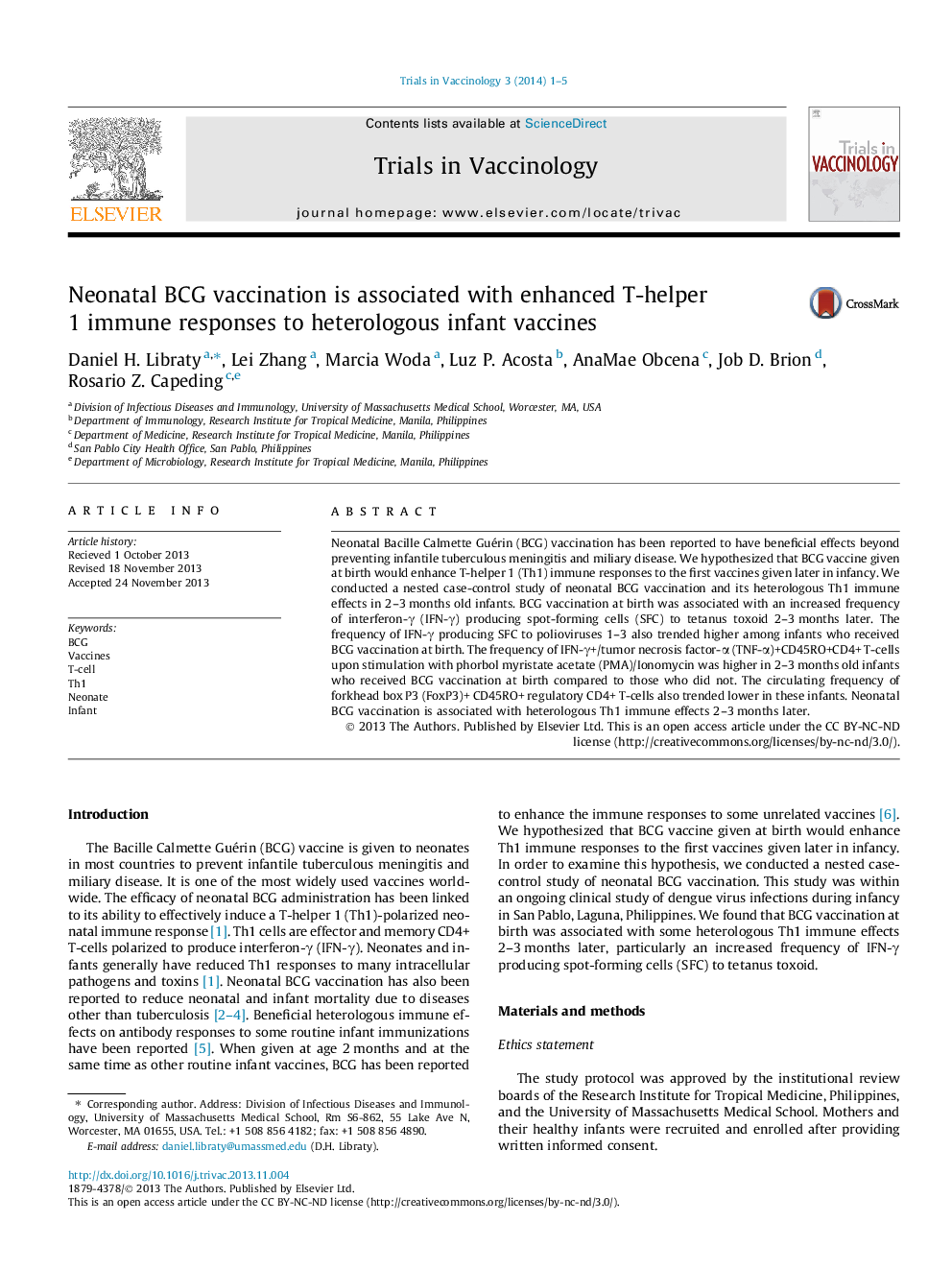| Article ID | Journal | Published Year | Pages | File Type |
|---|---|---|---|---|
| 2474398 | Trials in Vaccinology | 2014 | 5 Pages |
•Neonatal BCG vaccination was associated with increased IFN-γ SFC to tetanus toxoid.•Neonatal BCG vaccination was associated with increased IFN-γ SFC to poliovirus.•Neonatal BCG vaccination was associated with higher IFNγ/TNFα+ CD45RO+CD4+ T-cells.•Neonatal BCG vaccination was associated with lower FoxP3+CD45RO+ CD4+ T-cells.
Neonatal Bacille Calmette Guérin (BCG) vaccination has been reported to have beneficial effects beyond preventing infantile tuberculous meningitis and miliary disease. We hypothesized that BCG vaccine given at birth would enhance T-helper 1 (Th1) immune responses to the first vaccines given later in infancy. We conducted a nested case-control study of neonatal BCG vaccination and its heterologous Th1 immune effects in 2–3 months old infants. BCG vaccination at birth was associated with an increased frequency of interferon-γ (IFN-γ) producing spot-forming cells (SFC) to tetanus toxoid 2–3 months later. The frequency of IFN-γ producing SFC to polioviruses 1–3 also trended higher among infants who received BCG vaccination at birth. The frequency of IFN-γ+/tumor necrosis factor-α (TNF-α)+CD45RO+CD4+ T-cells upon stimulation with phorbol myristate acetate (PMA)/Ionomycin was higher in 2–3 months old infants who received BCG vaccination at birth compared to those who did not. The circulating frequency of forkhead box P3 (FoxP3)+ CD45RO+ regulatory CD4+ T-cells also trended lower in these infants. Neonatal BCG vaccination is associated with heterologous Th1 immune effects 2–3 months later.
